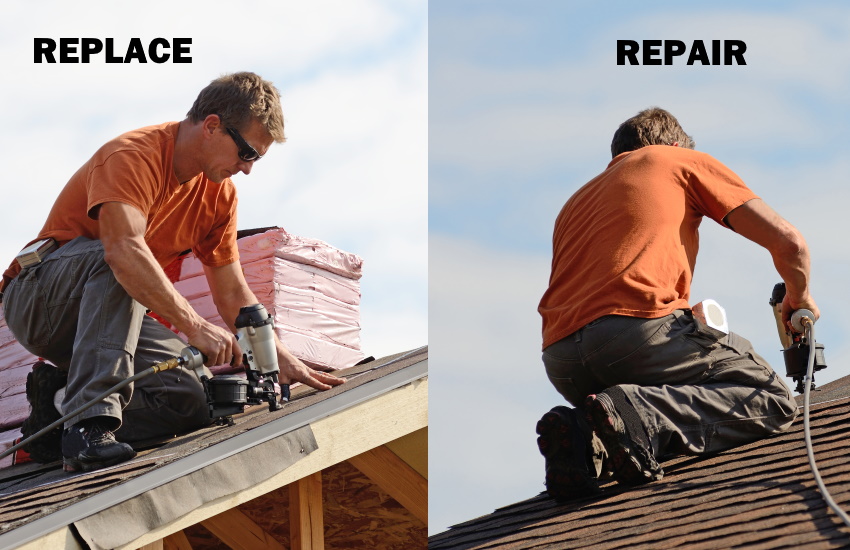Trick Considerations for a Successful Roofing Installment: Accomplishing Durability and Effectiveness
In beginning on the journey of roofing system installation, one have to focus on vital considerations to make certain both long life and effectiveness. The choice of materials, customized to withstand neighborhood climate problems, plays a crucial role in keeping structural integrity. As we explore these aspects, it comes to be apparent that a successful roof covering setup is not simply about covering a framework yet about crafting a durable and lasting option.
Choosing the Right Products

Environment plays an essential function in material selection. In areas susceptible to heavy rains or snow, products like asphalt roof shingles or metal roof covering with high water resistance are suggested. On the other hand, in warm environments, products with reflective buildings, such as great roof membranes or tiles, can help lower energy costs by dispersing sunlight.
Spending plan considerations also affect material option. While premium products like slate or clay tiles supply resilient performance, they include higher in advance costs. Nevertheless, they can show cost-efficient gradually due to their very little upkeep requirements and expanded lifespan.
Finally, the building style of the structure need to balance with the roof covering material. Traditional homes may benefit from wooden tiles, whereas modern-day structures may decide for sleek metal finishes. By very carefully considering these variables, you can select materials that align with both useful and visual objectives.

Comprehending Roof Design
Understanding roof layout is essential in attaining a well-functioning and cosmetically pleasing structure. The design of a roof influences not just the visual allure however likewise the structural integrity and functionality of the structure. A thoughtfully designed roof covering can improve the overall building style while ensuring reliable water drainage, insulation, and air flow.
Key elements of roofing layout include the pitch, shape, and structural support group. The pitch, or incline, establishes how effectively water and debris are lost from the roof covering surface, impacting the life expectancy of roof products. Usual roof shapes include gable, hip, flat, and mansard, each offering unique benefits and visual top qualities. For circumstances, saddleback roofs are popular for their simplicity and efficient water losing, while hip roof coverings give remarkable stability in high wind areas.
Architectural support group, such as trusses and rafters, are essential in distributing weight and keeping the roofing's integrity. Correct style guarantees that check this the roof covering can hold up against ecological loads and stand up to deformation. Additionally, incorporating features like overhangs and eaves can shield the building's façade and boost energy performance by supplying shade and lowering warm gain.
Inevitably, a well-considered roofing system layout balances create, function, and durability, contributing to the long-term success of the installment.
Climate Factors To Consider

In warm and sunny climates, roof products must reflect, instead than soak up, solar heat to maintain energy effectiveness and protect against excessive thermal expansion, which can cause product destruction - Keep Dry Roofing St Peters MO. Conversely, in colder regions, materials need to give adequate insulation to avoid warm loss and stand up to freeze-thaw cycles that can trigger fracturing and various other architectural concerns
In addition, the choice of shade and covering can dramatically impact a roofing system's thermal efficiency, especially in locations with severe temperature variations. Regional building ordinance typically provide assistance on appropriate materials and designs, reflecting local environment worries. Consequently, a thorough understanding of weather problems is vital for choosing materials and designs that make certain a roof covering's ideal performance over its lifespan.
Installment Best Practices
Reliable roofing system installation is a crucial component of making sure long-term durability and efficiency. Abiding by ideal practices throughout installation not just safeguards structural stability however also lessens costly future repair services. Picking the right products is extremely look at more info important. Utilizing top quality tiles, underlayment, and flashing tailored to the details climate and building style will certainly enhance the roofing's strength.
Similarly crucial is the prep work of the roofing deck. Making certain that the deck is tidy, completely dry, and structurally audio prior to setup stops difficulties such as leakages and early wear. Correct air flow is an additional crucial factor to consider, as it minimizes dampness buildup and thermal anxiety, therefore lengthening the roof's life-span.
Accuracy in dimension and positioning during the installation process is crucial. This entails exact positioning of roof shingles and precise attention to overlapping, which avoids water ingress. Using expert, competent labor guarantees these standards are met, lowering the danger of errors that can jeopardize the roofing system's efficiency.
Energy Performance Methods
Enhancing a roof's energy effectiveness is a strategic consideration for minimizing power costs and environmental effect. By picking appropriate materials and modern technologies, property owners and home builders can dramatically improve the thermal performance of a roofing, hence decreasing power consumption.
Additionally, the consolidation of appropriate insulation is essential in avoiding warm transfer between the inside and outside of a structure. Insulation materials with high R-values, such as spray foam or stiff foam boards, are efficient in keeping a regular interior temperature level, consequently maximizing HVAC system performance.
Furthermore, the integration of photovoltaic panels on roofs not just produces sustainable energy but can also provide color, more lowering warm gain (Keep Dry Roofing St Peters MO). Developments like amazing roofings, which utilize finishes to mirror even more sunlight, are likewise getting appeal for their capability to decrease roofing system temperatures
Verdict
In verdict, achieving a successful roof installation demands a detailed method that incorporates the selection of premium products tailored to certain climatic problems, thoughtful style considerations for optimal water drainage and architectural honesty, and adherence to precise setup practices. These elements collectively make sure the prevention of moisture buildup and thermal tension, thereby enhancing the roof covering's longevity and effectiveness. Integrating methods to improve energy effectiveness better contributes to reducing maintenance needs and lowering power intake over the roof covering's life-span.